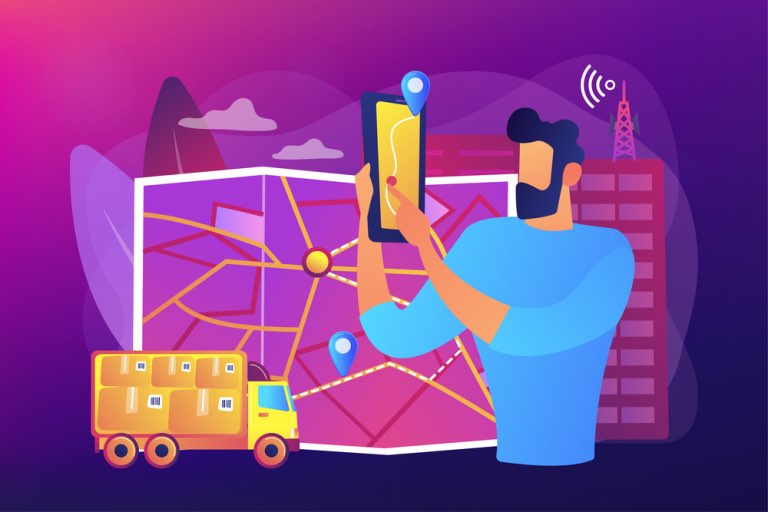Use real-time dashboards to monitor the supply chain, map delivery routes, implement tracking, reduce fuel costs with smart route planning, track shipment history, and use rich location data to reduce the time per stop.
Strategies for Improving Efficiency
Real-time data processing has changed data center operations, and real-time mapping analytics help delivery companies provide a customer-centric, personalized experience, yielding insights into their changing behavior and improving operational efficiency.
By using real-time dashboards, companies can monitor the supply chain more easily. Integration of big data has made it possible for dashboards to update automatically, providing the most current data available.
Real-time insights have improved the supply chain industry tremendously in recent years. Logistics providers use real-time mapping data to understand shipping trends and improve the end user’s experiences.
Maps help select optimal transportation carriers and modes and determine the most efficient delivery routes.
One effective strategy is to implement tracking technologies like RFID to give stakeholders and customers live shipment updates, reduce customer inquiries, and improve transparency.
Mapping tools work by feeding a list of destinations in software, at the core of which is an algorithm that maps the locations and scans the routes based on preexisting data feeds and map images.
The optimal route for the given driver is determined based on input from the scanned roads, and the data is sent to his device.
All the mapping and calculations transpire in a few minutes due to the high processing speed and advanced technology. If any changes occur, the information is sent to the fleet master and the driver in real-time.
The map on the device is updated and displays the new route and direction the driver has to use, for example. This feature is crucial to logistics efficiency through proper route planning and can ensure the driver’s safety.
Strategies for Reducing Costs
Delivery costs are increasing. As shipping costs were becoming too high, Amazon had to increase the Amazon Prime subscription fee correspondingly.
Over the past ten years, the e-commerce giant’s logistics costs have soared, with fulfillment and shipping expenses growing almost 40 times between 2009 and 2021.
In 2022, the prices for members of European Prime increased by 13-40%. Amazon’s revenue also increased almost 20 times since 2009, but it couldn’t make up for the increase in logistics costs.
In 2009, fulfillment and shipping costs accounted for 15.6% of net sales. That number had gone up to 32.3% by 2021. According to the State of Logistics Report, US business logistics costs rose by almost 20% in 2022 to a record $2.3 trillion.
This money, which is spent to keep the national logistics network in operation, makes up 9.1% of the country’s gross domestic product.
One strategy involves using route optimization tools to reduce fuel costs and travel time and improve delivery accuracy.
If you track shipment history over time, you will notice patterns and opportunities to save money. Looking at route history also helps evaluate performance and identify bottlenecks.
Businesses can use real-time data analytics to reduce operational expenses in many ways. One is by saving money from having to hire coding experts.
Big data has become far more accessible and understandable to the layman in recent years. Team members reasonably have what they need to extract insights from the data.
Automated address validation and correction get drivers where they need to go directly, cutting down on the time per stop.
Using street coordinates and other rich location data can enhance precision. Information on delivery time windows, counterintuitive entrances, and convenient parking spots all combine to find the most cost-effective routes.
Finally, delivery companies can use predictive analytics to generate accurate delivery windows and improve timely delivery rates, thereby saving money.
Final thoughts
By harnessing the power of real-time mapping data, delivery companies can streamline operations, reduce costs, and provide better service to their customers. This is of paramount importance in an age of low efficiency and high operational costs.
